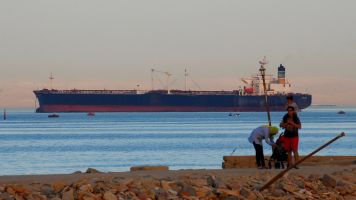Why Is Reconceiving The Global Trade Finance Ecosystem Essential And How Is It Possible?

Trade finance service helps to get cash and finance quickly, making the supply chain smoother. The need to work on the $5.2 trillion global trade finance ecosystem, which works with labor development and products all over the planet, has been apparent for quite a while. A new Asian Improvement Bank concentrated on assessing that the hole in trade finance accessibility came to $1.7 trillion by 2020, addressing 10 percent of global trade. Interruption energized by the Coronavirus pandemic is broadly recognized to have exacerbated this setback, as most would consider it normal to persevere missing proactive measures.
These issues are especially trying for the miniature, tiny, and medium-sized undertakings (MSMEs) that assume an undeniably significant part in global trade. Supporting dismissal rates for such organizations run at 40%; a 2017 World Bank report showed that 65 million MSMEs were credit compelled.
Why Is It Necessary to Reconceive Trade Finance Ecosystem?
Different members are monetary organizations, which give the liquidity and the gamble evaluation critical to executing trade trades, alongside many administrations fulfilling a developing rundown of trade members' neighboring necessities. Although corporate banks remain the predominant presence here, open doors for more outstanding support exist for institutional financial backers, trade credit organizations, and credit insurance agencies. Supporting choices incorporate provider-side and purchaser-driven models, contingent upon which yields the best business terms and working-capital results for a given relationship.
A third vital participant in trade finance is the strategies business, which conveys items and works with the going stream of data. Partners incorporate innovation suppliers, trade associations, states, and other administrative bodies.
Given our attention to MSMEs, our exploration searched for their problems. We recognized three critical trouble spots, starting with admittance to liquidity. First, numerous MSMEs either fall short on important security or can't meet the gambling evaluation measures for utilizing trade finance administrations. Intensifying the issue, banks might feel that restricted admittance to ample business-related authentic information obliges their capacity to broaden letters of credit.
One more test is the intricacy of trade finance trades. Many-sided work processes range from different gatherings, which causes enormous manual work and commonly requires trading paper archives, expanding functional expenses, and lifting credit risk. Moreover, guidelines vary across locales, frequently prompting mind-boggling and obscure cycles. Further intricacy comes from the subtleties and subsegments of the three essential item classes: narrative business, provider-side funding, and purchaser-driven support.
At long last, MSME providers need help in the quest for new clients and income sources that are fundamental for their development, including institutional obstructions and organization, absence of assets, and an absence of admittance to abroad business sectors. Digitization of trade cycles and money could lighten some of these circumstances by expanding straightforwardness and opening up assets.
Progress on these issues has been eased back to some extent by the way trade finance has stuck to laid-out, and conventional innovation approaches for a long time. However, as of late, developments, for example, blockchain, application programming connection points (APIs), regular language handling, and high-level optical person acknowledgment, have arisen in the space. These advancements do critical jobs for innovation suppliers.
Reconceiving Trade Finance Ecosystem
Progressions in innovation have prompted an assortment of new trade finance approaches and players, each tending to the weaknesses of heritage processes. Until now, notwithstanding, such pockets of advancement have brought about "computerized islands," or shut frameworks of exchanging accomplices utilizing (typically) exclusive innovation custom-made to address clear use cases and trouble spots. Unfortunately, these arrangements can accidentally cause longer-term disengagements in settling close-term difficulties.An improved global trade finance biological system could resolve these issues by connecting the computerized islands. Key to this vision is an "interoperability layer" encouraging universal access across organizations and stages. Such a model would work on global proficiency by pointedly restricting redundancies while at the same time empowering the reception of a progression of global shared utilities and principles. Significantly, such a model is viable with the continuous improvement of tailor-made arrangements tending to the current and forthcoming trouble spots influencing explicit areas, geologies, and different subgroups.
The country should take the help of trade finance services to reconceive the global trade finance ecosystem effectively, which makes finance also available in a unique way.
Three Stages of Innovative Change
1. Building more extensive inventory network funding answers for smoothing out sources of income across the store network covering various levels and developing geographic inclusion.2. Tackling the barrier to scaling the reception of Distributed Ledger Technology (DLT), broadly perceived as an answer for bringing proficiency across the framework.
3. Organizing standard guidelines and conventions by expanding on the global drive on this front to empower interoperability across free developments.
Conclusion
There are a lot of hurdles to global trade finance services and trade within the country. Therefore to manage this and make this more convenient, there is a need to reconceive the global trade finance ecosystem.
Also, one should have a letter of credit, which helps to minimize the risk in international trade finance between the buyers and sellers.
Trade finance could fill in better, especially for the large numbers of more modest organizations that assist with energizing the global economy. Finally, another joint report sets out a dream for all players to work on the biological system.
Global enterprises have started to use computerized advancements that further develop store network productivity and transparency, laying out new automated organizations to work with trade and money. However, with their divided nature and restricted scale, MSMEs find it hard to benefit from such open doors.






